ADVERTISEMENT
building
Building in Jacmel with prefabricated cast-iron pillars and balconies
Here is a picture of a building located in the historic city of Jacmel. As it was the case with many buildings following the great fire of 1896, that almost destroyed the entire city, this building was made with prefabricated cast-iron pillars and balconies
The city of Jacmel was a major coffee trading centre during the colonization period and was home to many wealthy Masters
National Contingency Plan has no Plan for Tropical Storm or Hurricane
As Hurricane is expected to bear down on Haiti, motivated the island's National Contingency Plan (NCP) to release information of what to expect when the storm landed. NCP offered no preparedness tips, but a litany of alarming predictions: the death rate will soar, rural migrations to urban areas will multiply, and disease will be endemic.
More than half a million nationalists are in danger; a 100,000 increase from 2012's forecast. The government is unable to provide adequate services for the ballooning populations.
Home Building in Haiti and the lack of Building Code enforcement
Haiti has a building code; it is the enforcement of this code which is lacking. While understandable in the case of the poor who cannot afford the extra money it will cost to safe-guard the integrity of their houses, one is left to wonder where the Code Enforcement Officers were when many schools, government buildings, churches and hospitals were being built. It is of great importance that, going forward, the collapsed buildings are not being replaced by much of the same.
Construction Materials in Building in Haiti
It is estimated that 90% of the buildings in Haiti were made from materials not suited for earthquake resistance. The costs to build a structure that can withstand earthquake tremors can rise to anywhere from 10% to 20% of the building costs. Finding these costs prohibitive, most people opt out of the precaution as they simply can't afford it. The materials most commonly used include a mixture of branches, twigs and sticks called clisse, stone, bricks, earth and cement. Duplicitous contractors will use unrefined sand and limestone dust to make a cheaper, and consequently weaker concrete.
The informality of building construction in Haiti
Many experts, including OAS Department of Sustainable Development director, Cletus Springer and seismologist, Ian Main agree that the catastrophic effects of the 2010 earthquake were aided by the informality of the buildings' constructions. Not only is this true for housing constructed for and by the poor, but even in official business buildings. The neglect of the strictures of the building code led to the loss of infrastructure in 80% of the schools, 60% of the hospitals and all but one of the government buildings in Haiti.

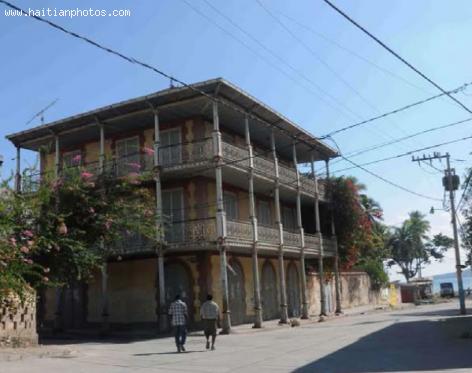
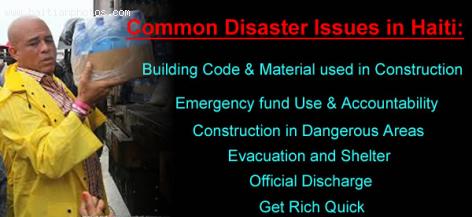
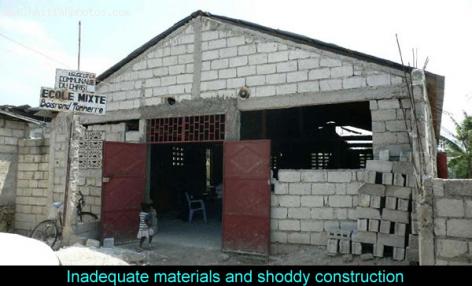
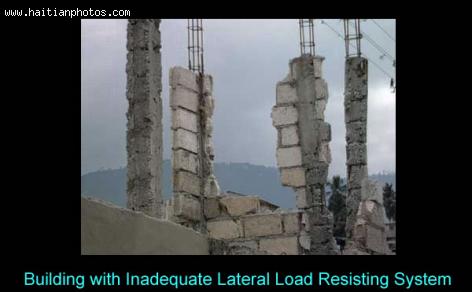
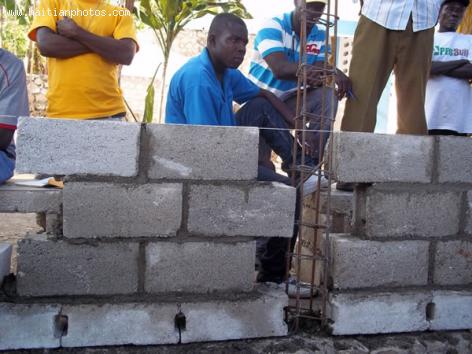

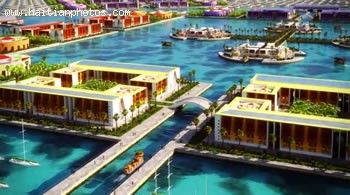
 Charlemagne Peralte betrayed by Jean-Baptiste Conze
Charlemagne Peralte betrayed by Jean-Baptiste Conze 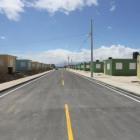 View of road in Lumane Casimir Village
View of road in Lumane Casimir Village  Children of Haitian descent handcuffed, deported from the Bahamas
Children of Haitian descent handcuffed, deported from the Bahamas  Jovenel Moise, the president has spoken. Period
Jovenel Moise, the president has spoken. Period  Rafael L. Trujillo welcoming Paul Magloire in Santo Domingo
Rafael L. Trujillo welcoming Paul Magloire in Santo Domingo 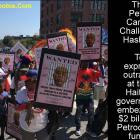 The Petro Caribe Challenge hashtag
The Petro Caribe Challenge hashtag  Port-au-Prince on fire over gas prices hike
Port-au-Prince on fire over gas prices hike  Jack Guy Lafontant resigns as Haiti Prime Minister
Jack Guy Lafontant resigns as Haiti Prime Minister 



